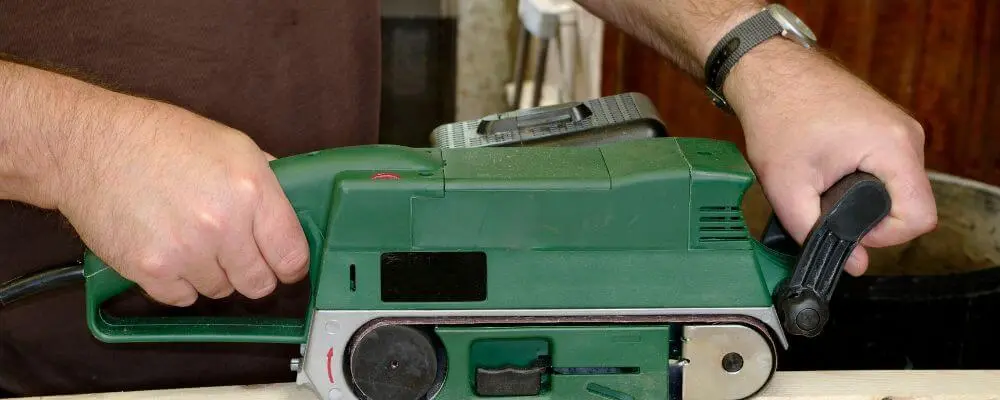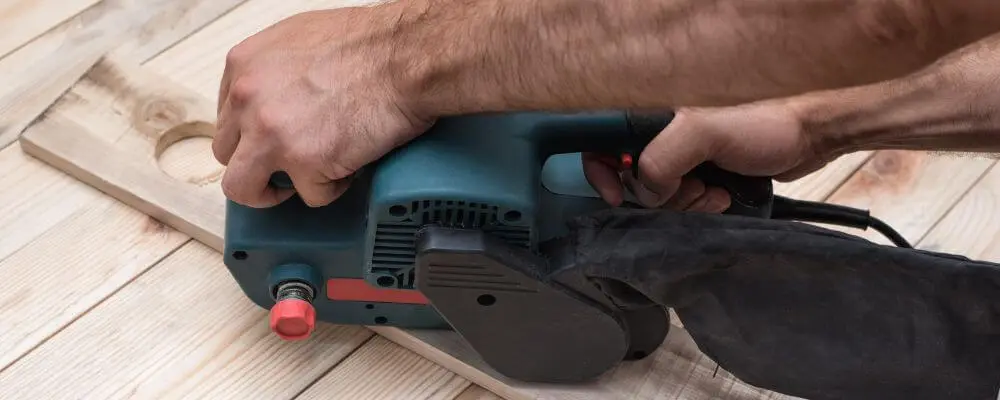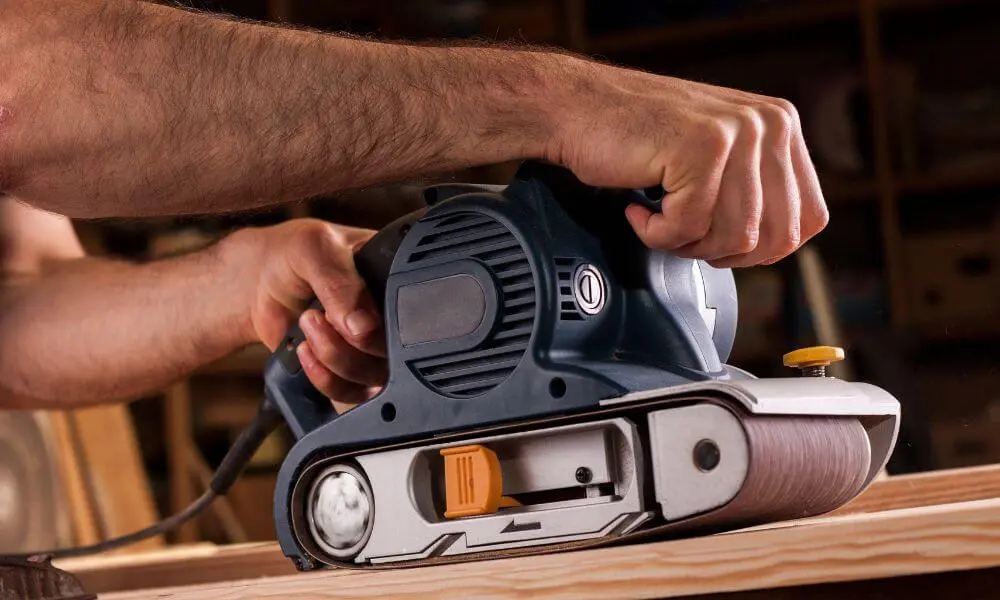In the realm of belt sanders, the role of safety switches is often overlooked yet crucially important. Having appropriate switches for Belt Sanders can make efficient working conditions. This can make a significant difference in both the performance and safety of these powerful tools. This article explores the various types of switches available for belt sanders. It also sheds light on the key factors to consider when selecting the most suitable one for your needs. By understanding the significance of appropriate switches, you can ensure a seamless and efficient operation of your belt sander, while prioritizing your safety at all times.
Safety Considerations
When it comes to using belt sanders, safety should always be the utmost priority. One crucial aspect of ensuring a safe operation is using appropriate switches. These switches not only provide control and convenience but also play a significant role in preventing accidents and minimizing the risk of injuries.
Importance of Appropriate Switches For Belt Sanders
Selecting the right switch for your belt sander is essential for several reasons. Firstly, it ensure that the tool operates smoothly and efficiently, allowing you to complete your sanding tasks effectively. Secondly, these switches contribute to the overall safety of using a belt sander. By having switches that are specifically designed for belt sanders, you minimize the chances of accidents caused by faulty or incompatible switches. Moreover, using the correct switches ensures that your tool meets safety regulations and guidelines, providing peace of mind during operation.

Safety Regulations & Guidelines
When choosing switches for your belt sander, it is crucial to consider the safety features they offer. Some key safety features to look for include overload protection, emergency stop function, and thermal shutdown. Overload protection prevents the switch from overheating and burning out. This usually happens if the sander is subjected to excessive load or when motor issues occur. The emergency stop function allows you to quickly shut off the sander in critical situations, reducing the risk of accidents. Thermal shutdown automatically turns off the sander if it reaches a certain temperature, preventing potential fire hazards. These safety features not only protect the user but also safeguard the overall operation of the sander.
Types of Switches for Power Tools
There are several types of switches commonly used in belt sanders. Each type has its advantages and disadvantages, which we will discuss in the following sections. By understanding the different types of switches available, you can make an informed decision. In this way, you can select the most appropriate switch for your belt sander.
Toggle Switches
Toggle switches are a popular choice for belt sanders due to their simplicity and durability. These switches consist of a lever that can be flipped up or down to turn the sander on or off. Toggle switches offer a tactile feedback that allows the user to easily feel if the switch is in the desired position. They are reliable and resistant to accidental activation, making them suitable for heavy-duty applications. However, one disadvantage of toggle switches is that they can be more challenging to operate with gloves. It is also difficult to use them in situations where precision is required.
Paddle Switches
Paddle switches are another common type of switches used in belt sanders. These switches feature a large, flat paddle-shaped button that is pressed with a finger or hand to activate the sander. Paddle switches are known for their ease of use, as they can be operated smoothly with minimal effort. This makes them an excellent choice for users who prioritize comfort and accessibility. However, it is important to note that paddle switches may be more prone to accidental activation. Especially when the sander is not in use, if not properly protected or locked.
Rocker Switches
Rocker switches are characterized by a rectangular button that rocks back and forth to turn the sander on or off. This type of switch is commonly used in belt sanders due to its versatility and user-friendly design. Rocker switches are usually larger in size, allowing for easier operation, particularly in situations where precision is required. They are often equipped with indicator lights, indicating the status of the sander. However, one thing to consider with rocker switches is their susceptibility to accidental activation if not properly positioned or protected.

Toggle Switches
What are Toggle Switches?
Toggle switches, as mentioned earlier, are switches that use a lever or handle to toggle the power on or off. They are commonly seen in a variety of electronic devices, including belt sanders. Toggle switches typically have a spring-loaded mechanism that keeps the switch in the desired position. This allows easy control and precise operation.
Advantages and Disadvantages
Toggle switches offer several advantages for belt sanders. Their simplicity and reliability make them ideal for heavy-duty applications. With tactile feedback, toggle switches ensure that users can easily feel if the switch is toggled on or off. This enhances safety during operation. However, toggle switches may be more challenging to operate with gloves or in situations where precise control is required, such as when sanding delicate or intricate pieces.
Paddle Switches
What are Paddle Switches?
Paddle switches, also known as trigger switches, are switches that can be activated by pressing a large, flat paddle-shaped button. These switches are designed for easy and comfortable operation, allowing users to activate the sander with minimal effort.
Advantages and Disadvantages
Paddle switches offer several advantages when it comes to belt sanders. Their ergonomic design makes them easy and comfortable to operate, reducing strain and fatigue during prolonged use. Paddle switches are ideal for users who prioritize convenience and accessibility. However, it is important to note that paddle switches may have a higher chance of accidental activation if not properly protected or locked, which can pose safety risks.
Rocker Switches
What are Rocker Switches?
Rocker switches are switches that use a rectangular button that rocks back and forth to control the power flow. They are widely used in belt sanders due to their versatility, ease of use, and user-friendly design.
Advantages and Disadvantages
Rocker switches offer several advantages for belt sanders. Their larger size and design make them easy to operate, especially in situations where precision control is necessary. Many rocker switches are equipped with indicator lights, allowing users to easily determine the status of the sander. However, rocker switches may be more susceptible to accidental activation if not properly positioned or protected.

Switch Positions
Switches can be categorized into single pole switches and double pole switches based on the number of poles they have. Understanding the difference between these two types of switches is essential when selecting the most suitable switch for your belt sander.
Single Pole Switches
Single pole switches, also known as single throw switches, have a single pole and a single set of contacts. These switches can have two positions – on (closed) and off (open). They are commonly used in belt sanders and provide a simple and straightforward control mechanism.
Double Pole Switches
Double pole switches, also known as double throw switches, have two separate poles and two sets of contacts. These switches provide additional flexibility and control options compared to single pole switches. Double pole switches can have three positions – on (closed), off (open), and a momentary position. Momentary switches allow for temporary activation of the sander, which can be useful in certain applications.
Single Pole Switches
Functionality and Features
Single pole switches are straightforward in functionality. They provide a simple on/off control mechanism for belt sanders. These switches can be easily operated and are suitable for most sanding tasks. Single pole switches often come with built-in safety features such as overload protection and thermal shutdown, ensuring the safe operation of the sander.
Suitability for Belt Sanders
Single pole switches are widely used in belt sanders due to their simplicity and efficiency. They offer reliable control over the power supply, allowing users to turn the sander on or off with ease. Single pole switches are generally suitable for most belt sander applications, making them an excellent choice for both professional and DIY users.
Double Pole Switches
Functionality and Features
Double pole switches offer enhanced functionality compared to single pole switches. With two separate poles and more contact options, these switches provide increased control and flexibility. In addition to the standard on/off positions, double pole switches often have a momentary position, allowing for temporary activation of the sander. This can be beneficial when performing precise sanding tasks that require intermittent operation.
Suitability for Belt Sanders
Double pole switches are suitable for belt sanders that require more control options. The momentary position can help in situations where the sander needs to be started and stopped repeatedly in a short period. Belt sanders used for intricate woodworking or delicate material sanding can benefit from the added functionality and control provided by double pole switches.
Switch Ratings
Understanding switch ratings is crucial in ensuring the compatibility and safe operation of your belt sander. Amp ratings determine the amount of current that a switch can handle without overheating or malfunctioning.
Understanding Amp Ratings
Switches have specific amp ratings that indicate their maximum current-carrying capacity. It is important to choose a switch with an amp rating that matches or exceeds the requirements of your belt sander. Using a switch with a lower amp rating than the sander’s motor can lead to overheating and damage to both the switch and the motor. On the other hand, selecting a switch with an excessively high amp rating may be unnecessary and could result in higher costs.
Matching Switch Rating with Belt Sander
To determine the rating of appropriate switches for belt sanders, refer to the specifications provided by the manufacturer. The motor’s amp rating should be used as a guideline when selecting a switch. Make sure to choose a switch with an amp rating that matches or slightly exceeds the motor’s requirements to ensure proper functionality and safety.
Aftermarket Switches
In some cases, it may be necessary or desirable to replace the factory switch of your belt sander with an aftermarket switch. Aftermarket switches offer various benefits, including improved functionality, enhanced safety features, and increased durability. However, it is crucial to consider compatibility and proper installation when replacing the factory switch.
Replacing the Factory Switch
If you decide to replace the factory switch of your belt sander, it is essential to choose a switch that is compatible with your specific model. Consult the manufacturer’s guidelines or seek professional advice to ensure the switch is suitable for your sander. Additionally, follow proper installation procedures, including disconnecting the power source and carefully wiring the new switch to avoid any electrical hazards.
Compatibility and Installation
When selecting an aftermarket switch, pay attention to the switch type, amp rating, and safety features to ensure compatibility and optimal performance. It is highly recommended to consult the manufacturer or contact a professional for assistance if you are unsure about the compatibility or installation process. Proper installation of aftermarket switches not only ensures safe operation but also maximizes the efficiency and longevity of your belt sander.
In conclusion, choosing appropriate switches for belt sanders is crucial for both safety and functionality. Toggle switches, paddle switches, and rocker switches each have their advantages and considerations. Understanding the different types of switches, their safety features, and switch ratings will help you make an informed decision. Whether opting for single pole switches or double pole switches, selecting the right switch ensures optimal performance and minimizes the risk of accidents. If necessary, replacing the factory switch with an aftermarket switch can provide added features and durability, but it is essential to prioritize compatibility and proper installation to uphold safety standards. By considering safety considerations and selecting appropriate switches, you can ensure a safe and efficient belt sanding experience. You can consult the best notes on the topic on BELT SANDER at osha website.
